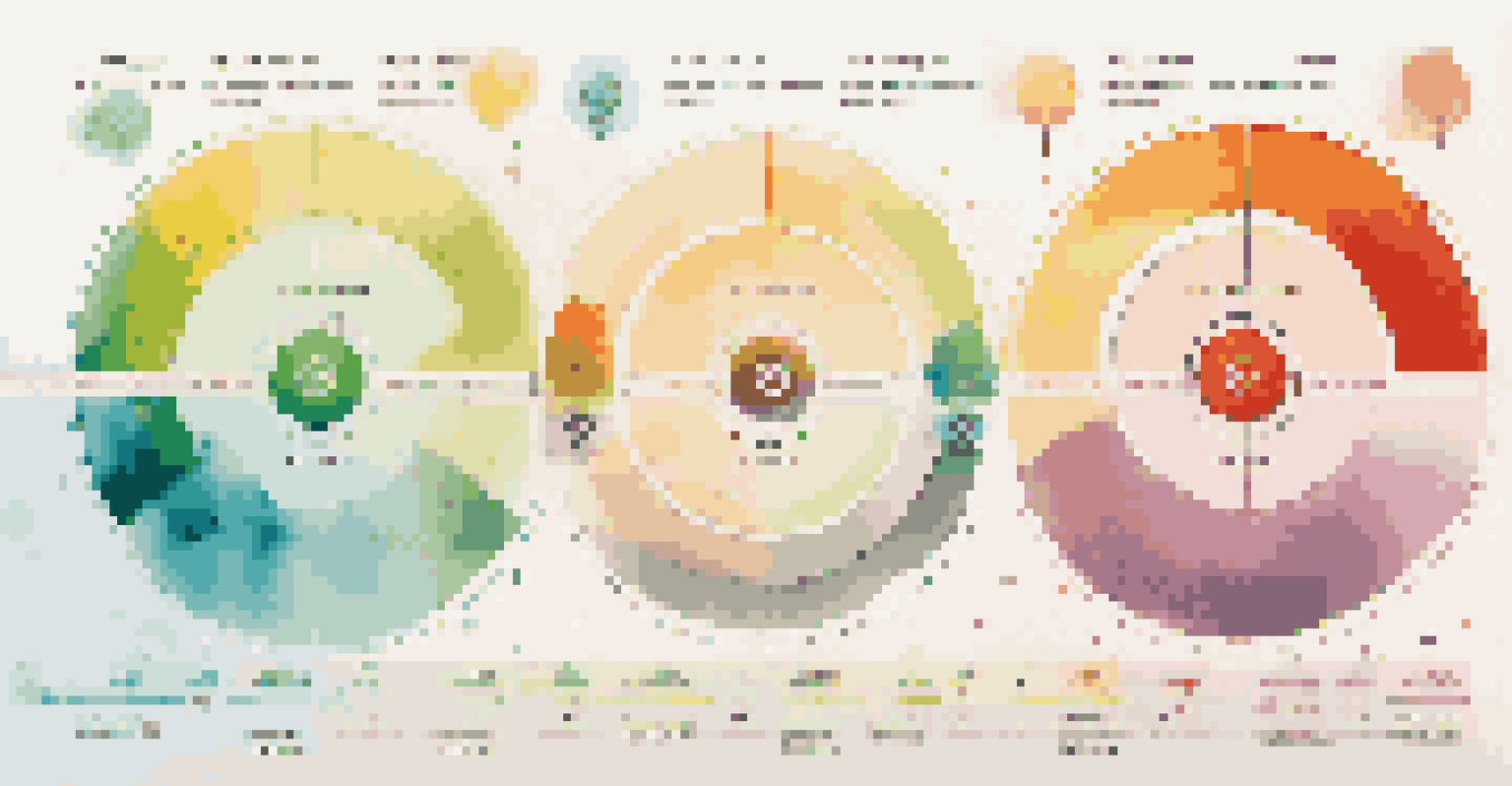Exploring Target-Date Funds: A Unique Mutual Fund Option

What Are Target-Date Funds and How Do They Work?
Target-date funds (TDFs) are investment vehicles designed to simplify retirement planning. They automatically adjust their asset allocation based on a specific target retirement date. For instance, if you plan to retire in 2040, you would choose a 2040 target-date fund that shifts from aggressive investments to more conservative options as the date approaches.
Time is the friend of the wonderful company, the enemy of the mediocre.
This gradual shift helps manage risk while aiming for growth in the earlier years. Imagine it as a journey where the fund's strategy evolves, ensuring you're not taking on too much risk as you near your destination—retirement.
TDFs can be appealing for those who want a hands-off approach to investing. By selecting a fund that aligns with your retirement timeline, you allow the fund managers to handle the complexities of asset allocation for you.
Benefits of Investing in Target-Date Funds
One of the biggest advantages of TDFs is their simplicity. Instead of picking individual stocks or bonds, you can invest in one fund that diversifies across various asset classes. This can be especially appealing if you're new to investing or prefer a more straightforward strategy.

Additionally, TDFs are designed to reduce risk over time. As the target date nears, the fund gradually reallocates assets to safer investments, like bonds. This is akin to slowing down as you approach a red light to ensure a smooth stop.
Target-Date Funds Simplify Investing
Target-date funds automatically adjust asset allocation based on your retirement date, making investment management easier.
Moreover, TDFs often come with lower fees compared to actively managed funds. This means more of your money goes toward your investment rather than management costs, which can be a significant advantage over the long term.
How to Choose the Right Target-Date Fund
When selecting a target-date fund, it's essential to consider your retirement timeline. The target date should align with when you plan to retire, but it's also crucial to examine the fund's glide path—the rate at which it adjusts its asset allocation over time. Different funds have varying approaches, so find one that matches your risk tolerance.
In investing, what is comfortable is rarely profitable.
You should also look at the fund's expense ratio, which indicates the fees associated with managing the fund. A lower expense ratio can significantly impact your investment's growth over the years, making it an essential factor in your decision-making process.
Lastly, examine the fund's performance history and the reputation of the fund manager. While past performance doesn't guarantee future results, it can provide insights into how well the fund has managed changing market conditions.
Risks Associated with Target-Date Funds
While TDFs offer many benefits, they are not without risks. One concern is that they may not always provide adequate protection during market downturns. For example, if a significant market crash occurs close to your target date, the fund's value could drop unexpectedly.
Another risk is the potential for over-reliance on the fund manager's strategy. Just like you wouldn't want to leave your car's navigation entirely to a GPS without checking the route yourself, it’s wise to stay informed about the fund's adjustments and performance.
Benefits Include Lower Fees
TDFs often have lower fees compared to actively managed funds, allowing more of your money to grow over time.
Finally, it’s important to remember that target-date funds may not meet all your retirement needs. Depending on your financial situation, you might want to supplement your TDF investments with other financial products to achieve your goals.
Understanding the Glide Path in TDFs
The glide path is a critical component of target-date funds, representing how the fund's asset allocation changes over time. Early on, the fund typically invests more heavily in stocks for growth, gradually shifting towards bonds for stability as the target date approaches.
Think of it like a plane landing; the glide path is designed to ensure a smooth descent. Just as pilots adjust their approach based on conditions, fund managers tweak the allocation based on market trends and economic forecasts.
Understanding the glide path helps investors gauge how aggressive or conservative a fund might be at any given time. This knowledge empowers you to select a fund that aligns with your risk tolerance and investment goals.
The Role of Target-Date Funds in Retirement Planning
Target-date funds can play a pivotal role in a broader retirement strategy. They serve as a central investment vehicle, allowing you to diversify your assets while saving time and effort. This can free you up to focus on other aspects of your retirement planning, like budgeting and lifestyle choices.
Moreover, TDFs can complement other retirement accounts, such as 401(k)s or IRAs, providing a straightforward way to balance your portfolio. Just as a well-rounded diet includes various food groups, a robust retirement plan may benefit from a mix of investment types.
Risks to Consider with TDFs
While convenient, target-date funds may not always protect against market downturns, requiring careful consideration of their strategy.
Incorporating TDFs into your retirement plan can also help mitigate the emotional stress of market fluctuations. With professionals managing the adjustments, you can feel more confident that your investments are working towards your long-term goals.
Conclusion: Is a Target-Date Fund Right for You?
Deciding whether a target-date fund is right for you ultimately depends on your individual circumstances and preferences. If you appreciate a hands-off approach and prefer professional management, TDFs could be a great fit for your retirement savings.
However, if you have a deep understanding of investments and prefer more control over your asset allocation, you might opt for a more active investment strategy. It’s like choosing between a guided tour and exploring on your own; both have their merits depending on your comfort level.

Ultimately, assessing your financial goals, risk tolerance, and investment knowledge will guide you toward the best choice for your retirement journey.